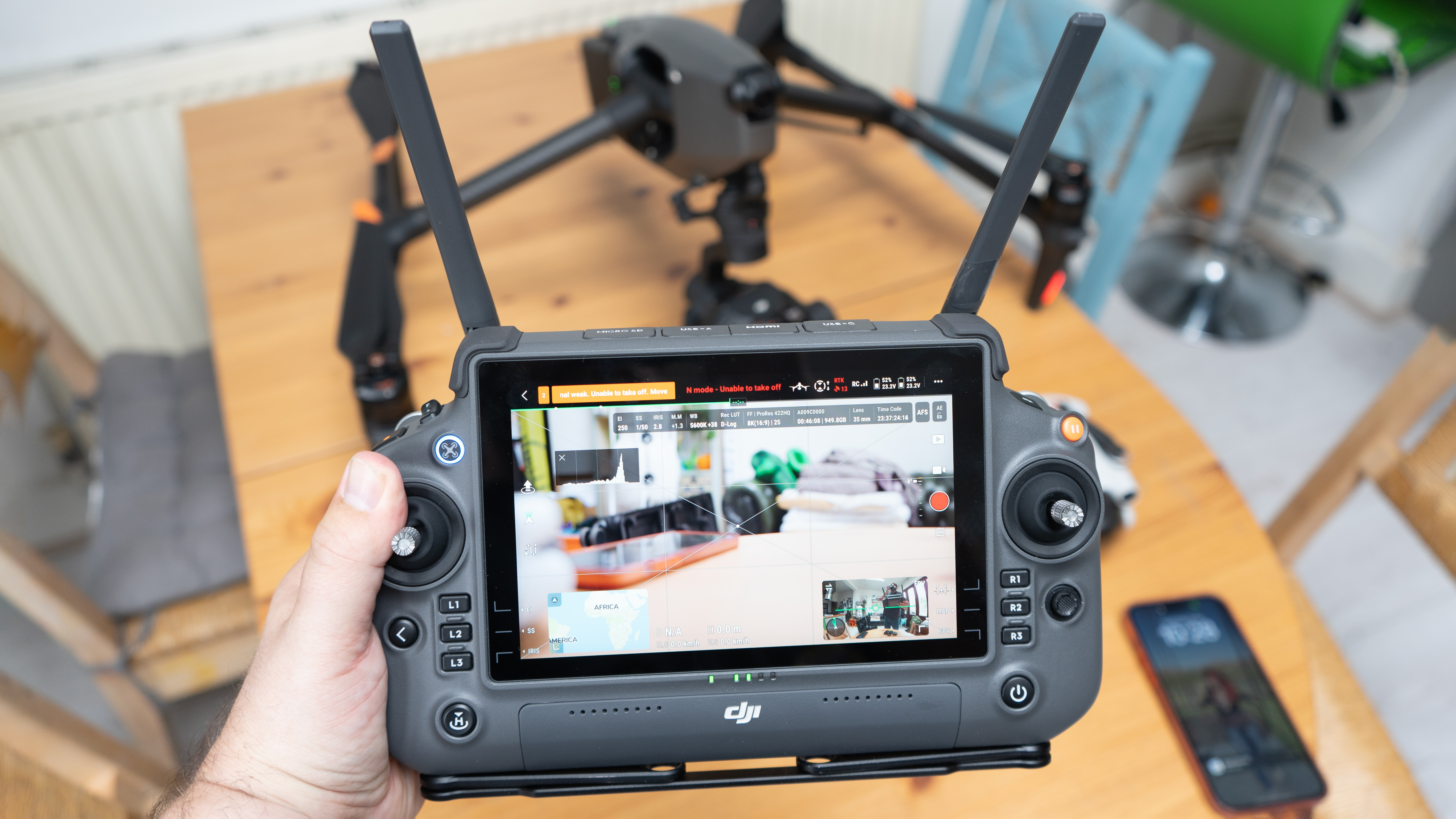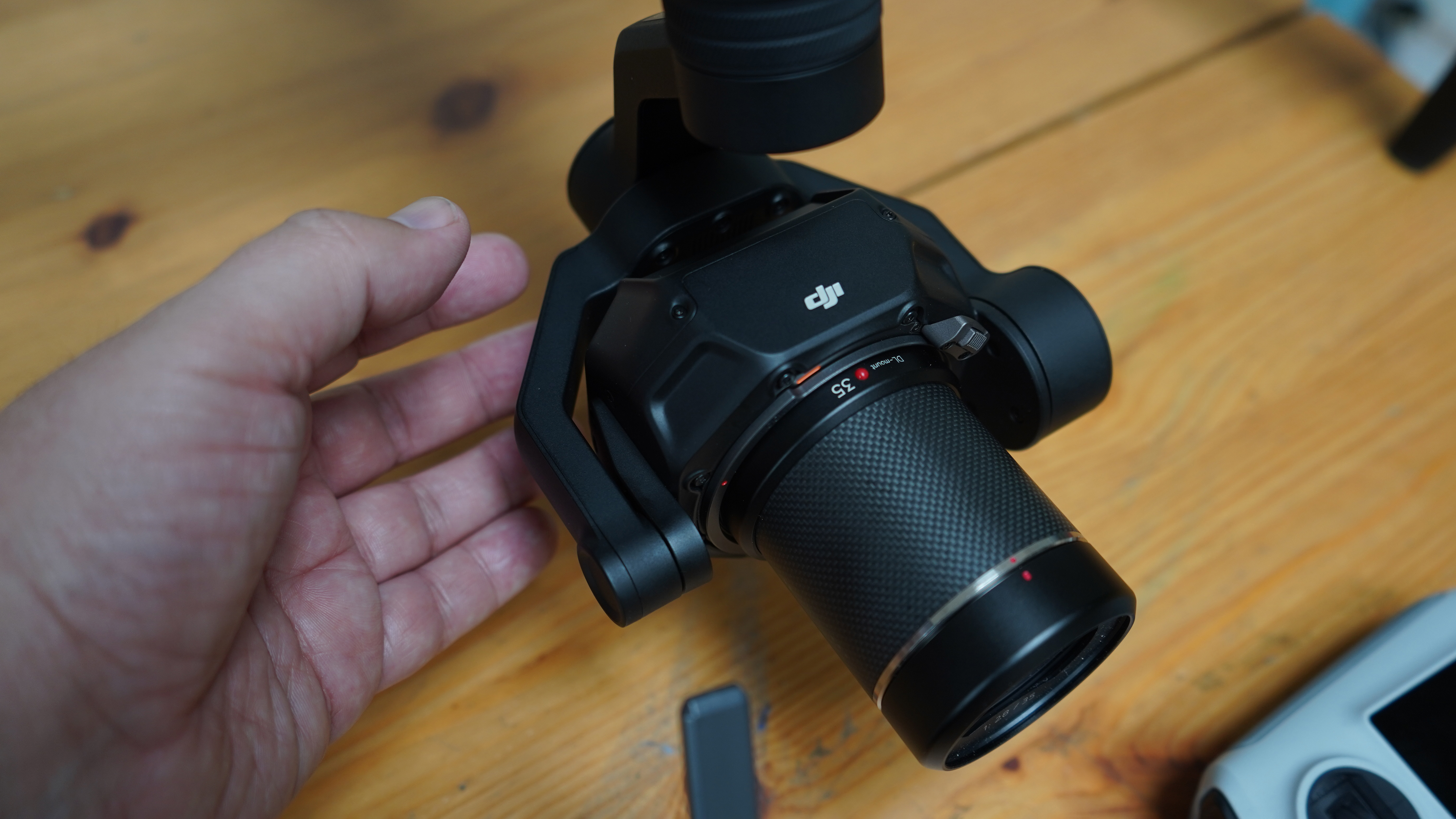
Sure, the DJI Inspire 3 is a big drone, but how big? While we're waiting for the batteries to charge why not put it on the table next to its sibling – the Mini 3 Pro – and see just how big?
Well, since I had a bit of time to kill while the batteries charged before I could get out and test, I thought I'd take a few photos to illustrate the sheer enormity of the drone in comparison with the very capable DJI Mini 3 Pro.
Of course, the Inspire 3 is noticeably more capable, especially for pro filmmakers, with broadcast quality 8K video shot through swappable lenses. Check back very soon for my real-world tests with these, but for now, I can say that it's big enough to occupy the table my family eats on (and scare the pants off Lego Doc and Marti).
It's not just big. The drone weighs in, by the way, at a fraction under 4kg, or 8.8 pounds, with the camera, dual hot-swappable batteries and props in place – and can lift a little more than that if needed.

The DJI RC Plus controller is enormous too, but offers an adaptable waist strap and clip to rest the weight on the pilot or camera operator's frame. The 1,200 nit 7-inch screen and offers access to a lot of features as well as room for extra batteries.
The Inspire 3 also boasts built in RTK, a very precise positioning system (around a centimeter) which, when used with a ground station, can be used to repeat a shot over and over again. GPS, by contrast, can be around 50cm even in perfect conditions, so if you were to repeat a shot and overlay them, they wouldn't line up perfectly in the edit.
This bolsters a number of software and related sensor enhancements which we've already reported on and I'm looking forward to testing for a full review in the next few days (although it it's as good as it looks perhaps I should just do a runner with it!) Smart tracking features and the 3D Dolly offer the potential to revolutionise filming.

The Inspire 3 has its own FPV camera with an impressive 161˚ field of view so the pilot has wide operational awareness – and even testing indoors on a table obviously better low-light performance than its predecessor (see my Inspire 2 review).
The main camera, though, is the Zenmuse X9-AirGimbal Camera which can capture 8K at 75fps, and boasts dual native EI (ISO) of 800 and 4,000 and over 14 stops of dynamic range. We reviewed the 6K version on the Ronin 4D cinema camera system, but it was always built with two purposes. The very robust lens clip makes this clear, as I found when putting the 35mm lens on for this photo.
Right now the drone is available to use with DL 24, 35, and 50mm f/2.8 lenses, with an 18mm on the way.
While you're waiting for our review, check out what I said about the Inspire 2, or our guide to the best camera drones across all budgets.







